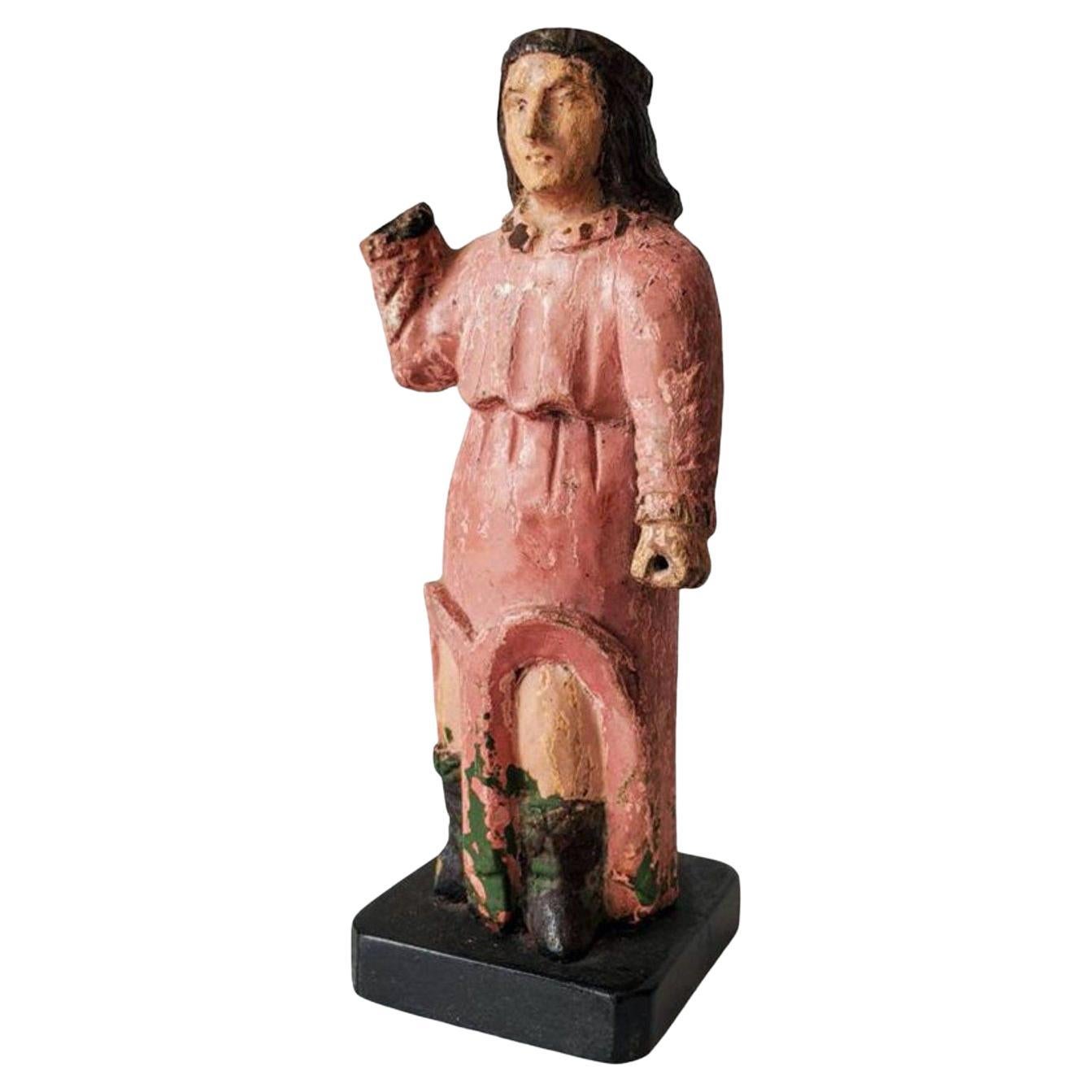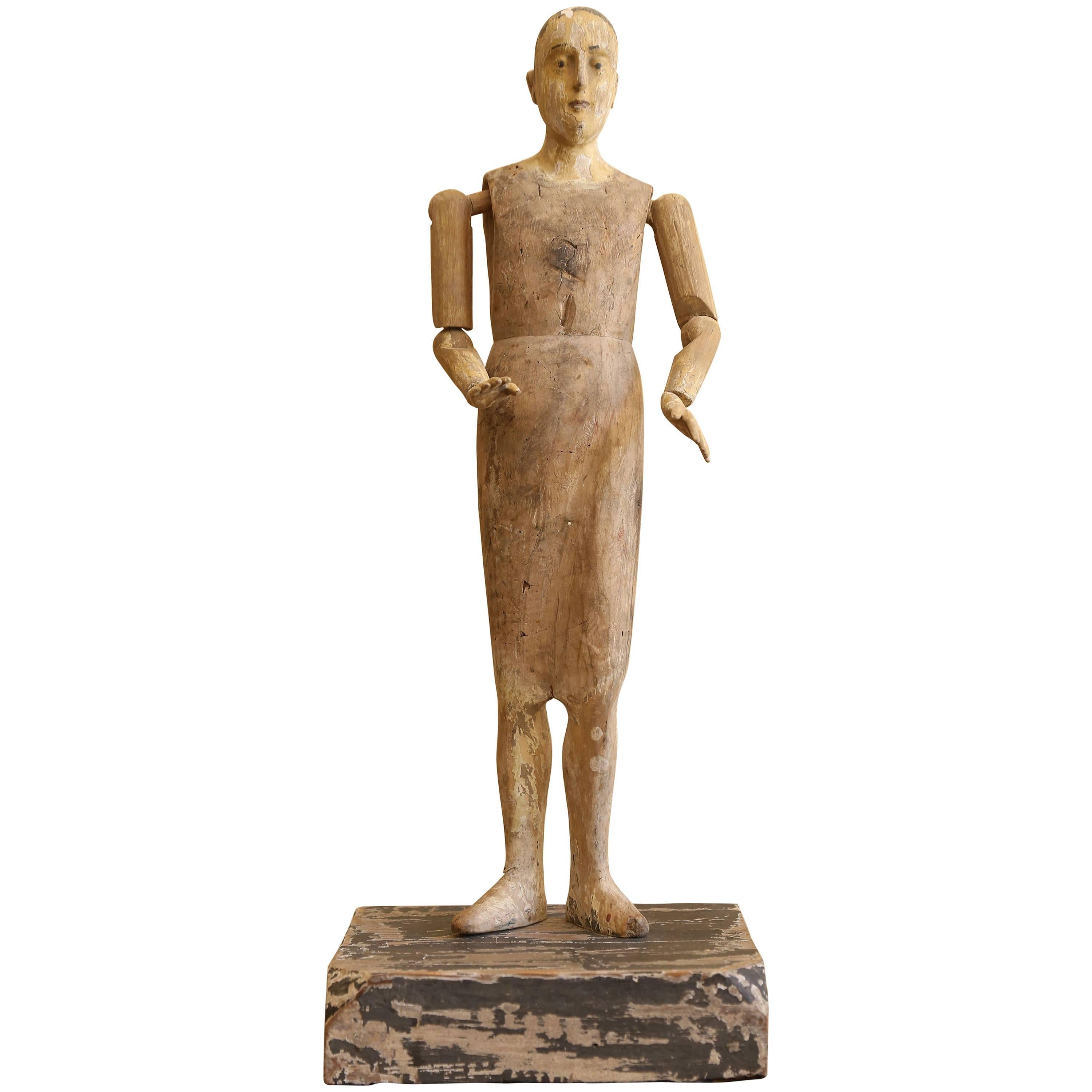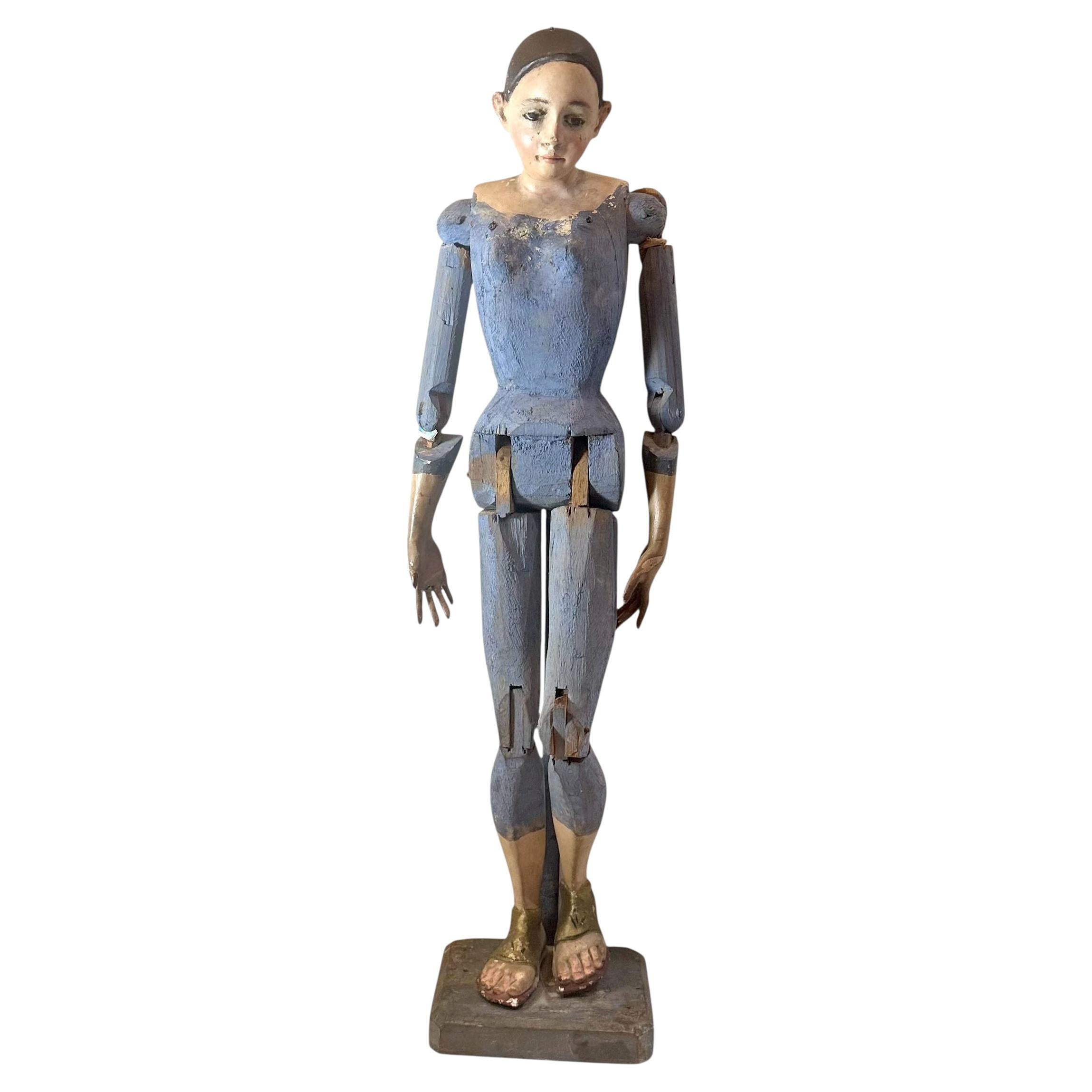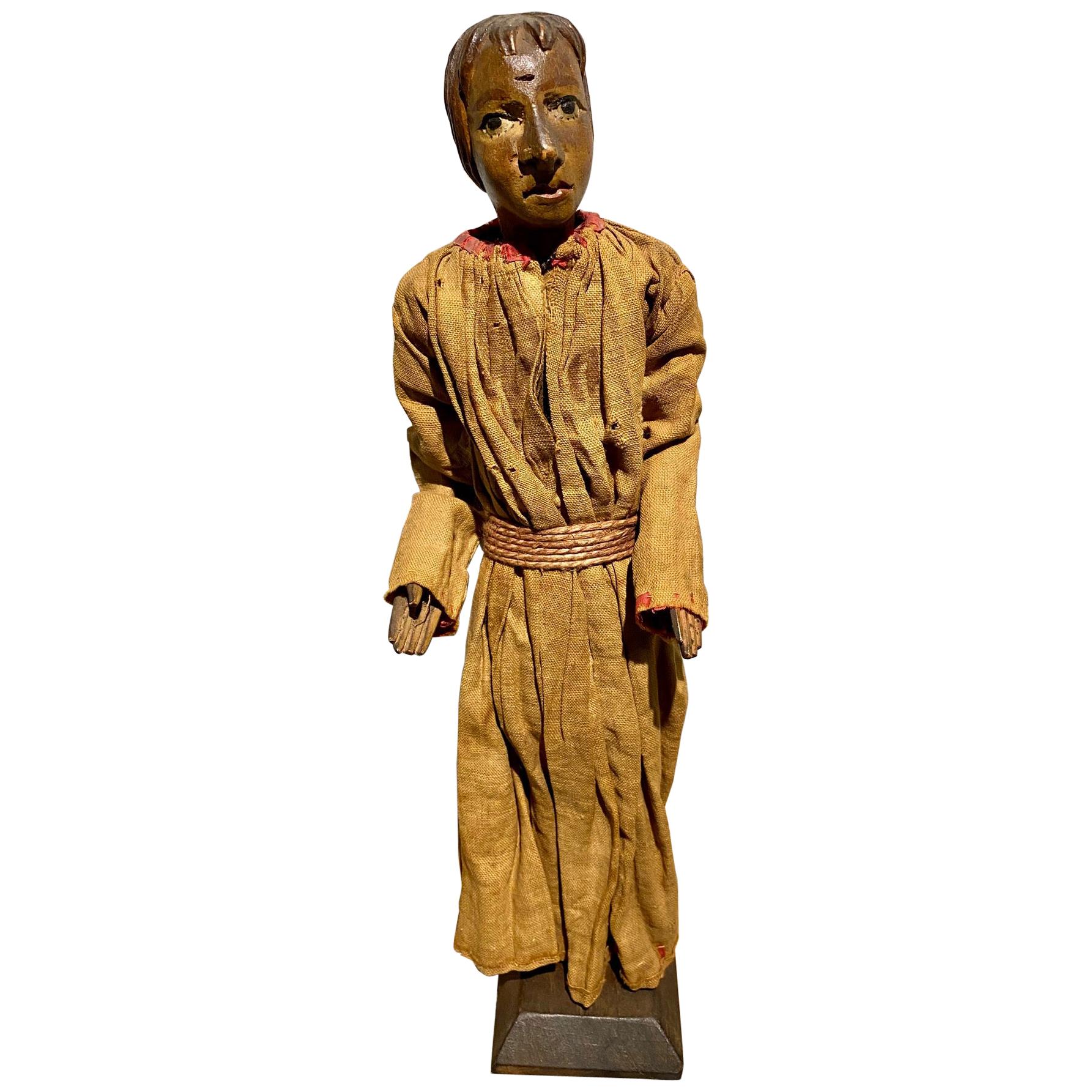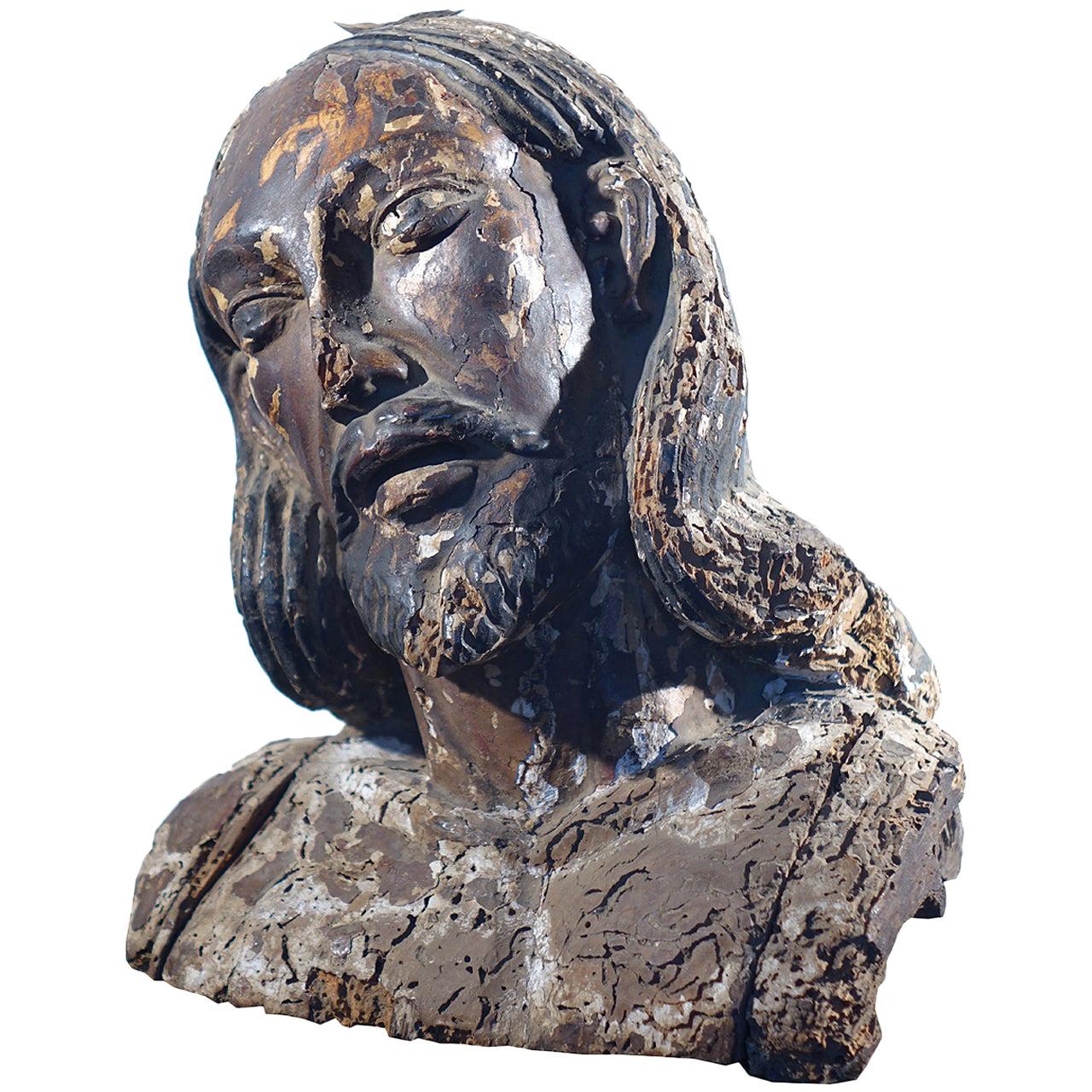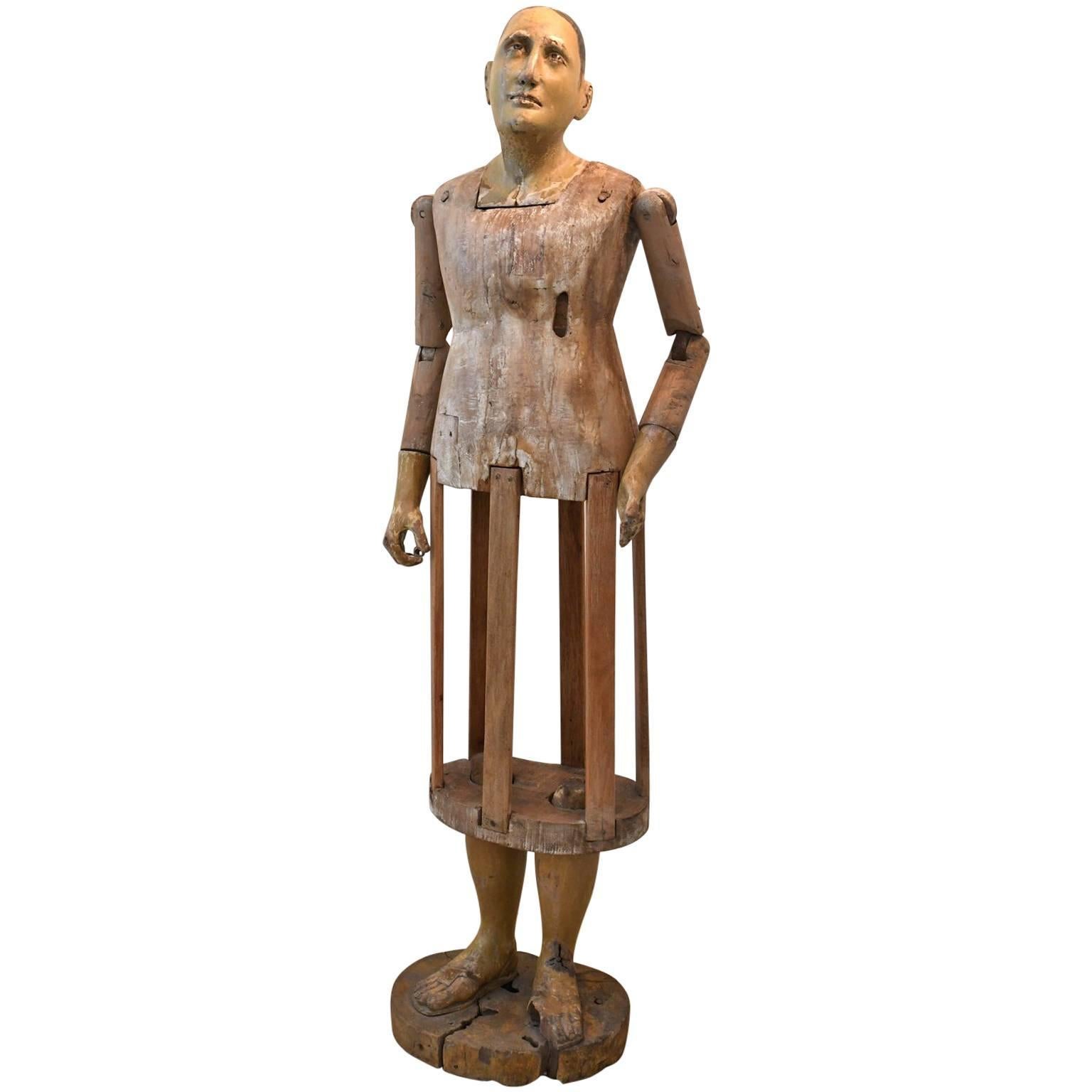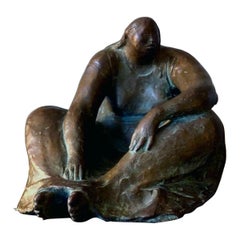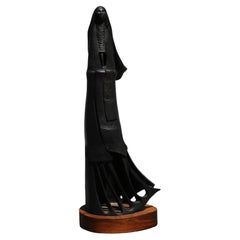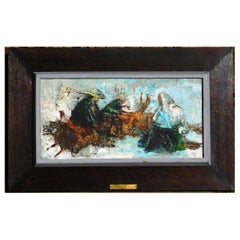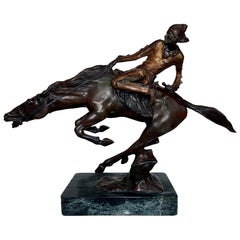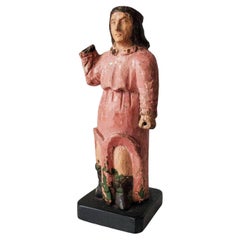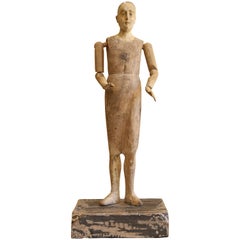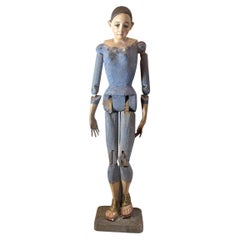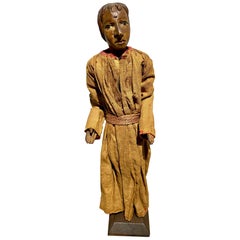Items Similar to Jose Aragon New Mexico Religious Boultos, Circa 1820 - Jesus de Nazarino
Want more images or videos?
Request additional images or videos from the seller
1 of 6
Jose AragonJose Aragon New Mexico Religious Boultos, Circa 1820 - Jesus de NazarinoCirca 1820
Circa 1820
$15,000
£11,329.15
€13,093.14
CA$21,039.80
A$23,398.29
CHF 12,247.93
MX$285,430.68
NOK 153,899.64
SEK 144,762.48
DKK 97,731.81
About the Item
Wonderful historic boultos by New Mexico artist Jose Aragon (1796-1850)
Titled: “Jesus de Nazarino.” Painted wood, gesso and polychrome.
Measures: 20 3/4"h x 9 ½”w x 5"d. In wonderful condition.
One of the few artists working in Spanish New Mexico during the late 18th and early 19th centuries, Jose Aragon focused on religious images for churches and homes. He was a wood carver and also a painter who used watercolor and tempera. For his woodcarvings, his method was to cover the carved object with gesso or plaster and then apply color with watercolor paints. Much of his work was creating monumental altar screens, and he also supervised church-decoration projects and carved retablos. Evidence shows that he was active for nearly fifty years, from 1815 to 1862.
The first record found of him is in Santa Fe on July 19, 1815 when he married Maria Josefa Lucero. By 1823, he and his wife and children lived in the Bario de San Francisco, which was the woodworkers' district of Santa Fe.
One of his first commissions, between 1818 and 1826, was the altar screen in the church of San Lorenzo at Picuris Pueblo near Santa Fe. He used tempera paint. Around 1835, he moved to a new home in the village of Quemado, later named Cordova, New Mexico. He went there to be with his second wife, Josefa Cordova, whom he married after the death of his first wife. There he carved and painted in folk-art style the main altar of the Quemado Church of San Antonio, and this became one of many projects that built his reputation throughout the Santa Cruz Valley. He did work on most of the churches in the area including at Santa Cruz, El Valle, Truchas, Chimayo, Hernandez, and Pojoaque. He also worked in the Taos area.
About the Seller
5.0
Gold Seller
Premium sellers maintaining a 4.3+ rating and 24-hour response times
1stDibs seller since 2024
38 sales on 1stDibs
Typical response time: <1 hour
- ShippingRetrieving quote...Shipping from: Phoenix, AZ
- Return Policy
Authenticity Guarantee
In the unlikely event there’s an issue with an item’s authenticity, contact us within 1 year for a full refund. DetailsMoney-Back Guarantee
If your item is not as described, is damaged in transit, or does not arrive, contact us within 7 days for a full refund. Details24-Hour Cancellation
You have a 24-hour grace period in which to reconsider your purchase, with no questions asked.Vetted Professional Sellers
Our world-class sellers must adhere to strict standards for service and quality, maintaining the integrity of our listings.Price-Match Guarantee
If you find that a seller listed the same item for a lower price elsewhere, we’ll match it.Trusted Global Delivery
Our best-in-class carrier network provides specialized shipping options worldwide, including custom delivery.More From This Seller
View AllFrancisco Zuniga Bronze Sculpture, 1965, "Juchiteca Sentada"
By Francisco Zúñiga
Located in Phoenix, AZ
Francisco Zuniga bronze sculpture. Seated female. Edition: 5.
#467 in the Zuniga catalog raisonne. Titled: "Juchiteca Sentada".
Measures: 8 7/8" H x 10 1/4" L x 10 5/8" W (not including the 1 ½" wood plinth).
Signed Zuniga and numbered 111/V. Created 1965.
A Letter of Authenticity issued by the Zuniga foundation (and son Ariel Zuniga...
Category
1960s Figurative Sculptures
Materials
Bronze
Allan Houser Native American Bronze Modernist Sculpture - "Waiting"
By Allan Houser
Located in Phoenix, AZ
Allan Houser Native American Bronze Modernist Sculpture created 1978.
Beautiful, large Allan Houser bronze - female figure titled "Waiting."
The...
Category
1970s Modern Figurative Sculptures
Materials
Bronze
Jose Salazar Ruiz Esparza Mexican/American Artist, Modern Painting, Ca. 1960's
By Jose Salazar Ruiz Esparza
Located in Phoenix, AZ
Original Oil on Canvas by Jose Salazar Ruiz Esparza signed by the artist lower left.
The work presents in the original frame and is in excellent condition. Created circa 1960's.
The...
Category
1960s Figurative Paintings
Materials
Paint
Bruno Zach Deco Bronze Sculpture, 1925, Native American Subject
By Bruno Zach
Located in Phoenix, AZ
Beautifully cast deco Austrian bronze titled: “Indian Brave on Charging Horse.”
Sitz on a marble plinth. The figure has a cold painted buckskin colored shirt and pant.
Signed on base...
Category
Early 20th Century Modern Figurative Sculptures
Materials
Bronze
Mexican Modernist Painting by Jesus Leuus, 1973, La Familia
Located in Phoenix, AZ
Modern Mexican painting - acrylic on Masonite by Jesus Leuus (1948-)
This painting is in excellent condition and is signed and dated lower righ...
Category
20th Century Figurative Paintings
Materials
Paint
P.E. Guerin, New York Bronze Mercury - 19th Century
Located in Phoenix, AZ
Pierre Emmanuel Guerin, (American, NY, NY born France, 1833-1911).
Large PE Guerin foundry bronze casting of Mercury. Measures 36"h x 11"w x 8" across.
Rests on a decorative bronze...
Category
19th Century Figurative Sculptures
Materials
Bronze
You May Also Like
19th Century Spanish Colonial Religious Folk Art Santo Altar Figure
Located in Forney, TX
An antique Spanish Colonial period hand carved and painted santo church altar figure. Born in Mexico in the first half of the 19th century, the religious...
Category
Antique 19th Century Mexican Folk Art Religious Items
Materials
Wood, Paint
19th Century Religious Santo Figure
Located in Houston, TX
19th century articulated religious figure.
Category
Antique 19th Century Italian Figurative Sculptures
Materials
Wood
Spanish Colonial Wooden Santo
Located in Tampa, FL
A 19th century Spanish Colonial santo depicting the Mary, full of presence and quiet devotion. Carved from wood with all original paint, she stands gracefully on her original base an...
Category
Antique 1870s Spanish Figurative Sculptures
Materials
Wood, Paint
18th Century French or Italian Santo Nativity Figure
Located in Nantucket, MA
18th century French or Italian Santo Nativity figure, a hand carved and painted fruitwood figure for a Christmas Creche or Krippe. Excellent and delicate details to the head and hands. The half figure stands on a dowel set into platform base, dressed in original fine linen robe...
Category
Antique 18th Century Italian Folk Art Sculptures and Carvings
Materials
Linen, Fruitwood
1700s Religious Figure with Heavy Patina
Located in Peekskill, NY
The patina and age of this well done carving make a striking display. I'm guessing its 18th century and Italian. It has just the right look.
Category
Antique Late 18th Century Italian Folk Art Sculptures and Carvings
Materials
Wood
18th Century Spanish Colonial Carved Wood Statue of a Saint
Located in Miami, FL
A very fine Spanish Colonial statue of a male saint in carved and polychromed wood. The saint's face has a beatific expression and the eyes are made of gl...
Category
Antique Mid-18th Century Philippine Baroque Figurative Sculptures
Materials
Wood
More Ways To Browse
Mexico Religious
Carved Jesus
Antique Carved Wood Religious Sculpture
Antique Jesus Sculpture
Antique Church Altars
Jesus Wood Sculpture
Mexican Antique Sculpture
Mexican Altar
Plaster Jesus
Mexican Retablo
Antique Retablos
Spanish Retablo
18th 19th Jesus
Retablo Wood
Antique Mexican Retablo
New Mexico Retablo
Josefa Mexico
Herb Mignery Sculptures
